Workshop where participants tried puzzling their food to fit on a 1600 m^2 area
Imagining a sustainable life
The project explores a way to interact with lifestyle decisions in the context of the Planetary Boundaries, as defined by the Stockholm Resilience Centre. The aim is to create a tool that can help individuals navigate what it means to live in a way that does not put the stability of earths climate at risk, and give individuals a better understanding of what futures to build on moving into their future. By letting individuals interact, and play with possible lives the tool can create desirable and concrete goals to strive for. In doing so the aim is not only to inspire changes in individual lifestyles, but for individuals to get a better understanding of what overarching changes need to be made to create sustainable lives, and how they, through all types of action, can contribute towards building those futures and lives.
Project Information
70% of all carbon emissions are from households, and 50% of all emissions come from the wealthiest 10%. While that partly describes a great inequality of the situation we're in, it also shows that the ecological crisis is largely a product of the wants of a minority and not the needs of the human population. In fact, many climate scientists are now in agreement that we have the technology and knowledge needed to solve the climate crisis, but we lack the ability to collaborate globally, move toward the solutions, and change our ways of living.
The project addresses this problem in the context of lifestyles, and creating desirable futures by exploring ways to build a life within the Planetary Boundaries. Instead of focusing on individual consumer behavior the project investigates how to create bigger coherent visions of what a sustainable life might look like, and give a clearer target to move towards in all aspects of life, not just what we consume.
We need to change what we want for our futures, but to do that we need to understand what wants are possible, what different options mean in the context of the whole planet, and what foundation we can build a life on.
”If we can't imagine how we want to live in the Anthropocene, it is very difficult to stake out pathways to get to preferable futures.” - Jan Kuiper, Stockholm Resilience Centre (2023).
”The greatest crisis in human history may requiring imagining ways of living - not just of energy production but of daily habit - that we have never seen before. How do we begin to imagine such a household?” - Noah Gallagher Shannon, The New York Times.
Methods
The project investigated the question by experimenting with ways to interact and visualize lifestyle choices and climate data. The process was iterative and developed by working with users with a set of digital and physical prototypes. The main goal was to create an engaging experience that gave a personal vision for a possible future and an interest in moving towards it.
To limit the scope to the time frame the current tool only investigates food choices and food production, and users in the target group ”young adults in Sweden". The purpose of the limit was to create a foundation to build on for further work, and later explore other aspects of lives and mediums better suited for other age-groups.
Result
The result is a digital interactive tool. The user interacts by placing tiles on an area representing the habitable surface of earth divided by the global human population. This area functions as a representation of the world through the lens of one persons life. By seeing how the tiles affect the Planetary Boundaries (like co2 emissions, land system change, freshwater use etc) the user can create their own set of food choices that fit within the boundaries. In this way the options, technologies and paths forward that exist can be put in the context of a whole life.
In the end the goal is to create an engaging tool that can be puzzled with to explore what combination of food, transportation, housing and other aspects of lifestyles are possible. In doing so the aim is to inspire new situated narratives, in specific lives and geographical locations, of ways to live in the future, and in turn a clearer vision of what to build on and what to move away from in our future lives.
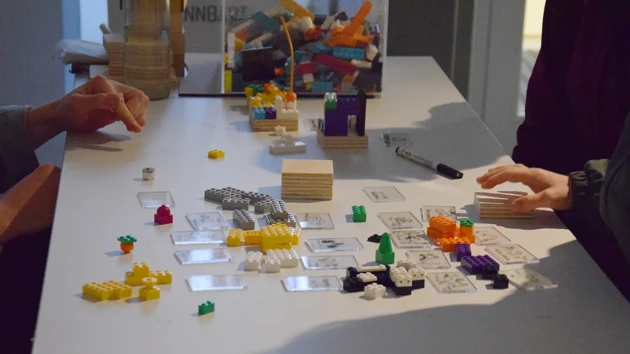
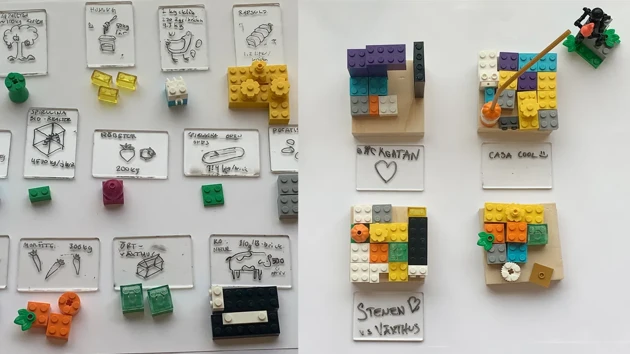
Results from the workshop, a mosaic of crop-area for their future food
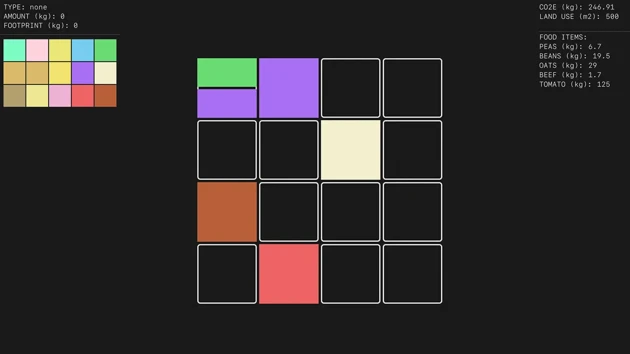
2D digital prototype
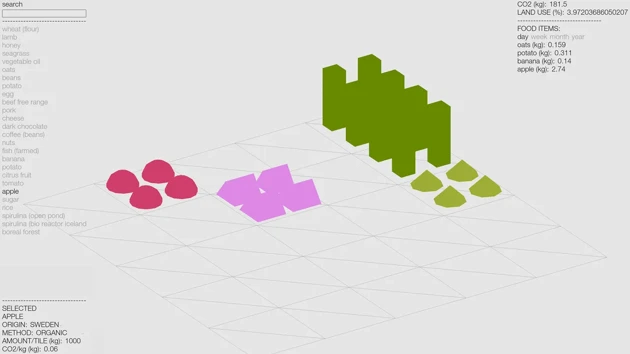
3D digital prototype
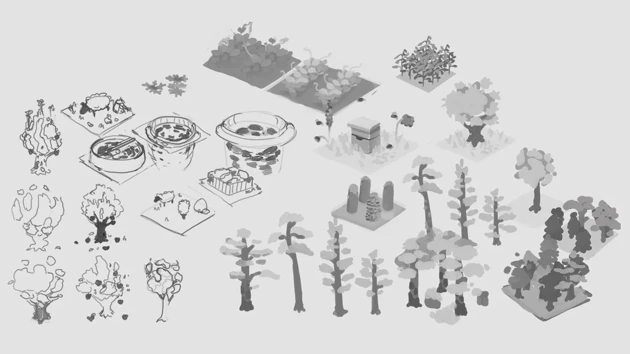
Sketches exploring how to represent different tiles
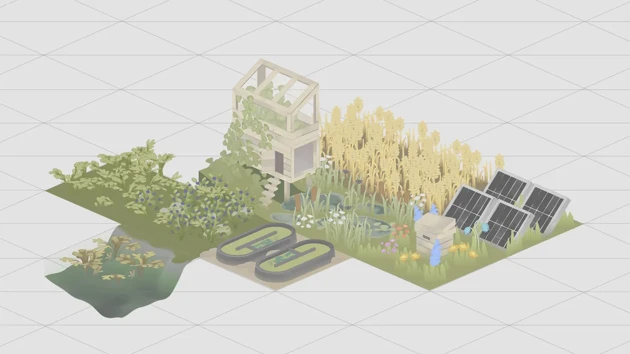
Result 1: Visual example
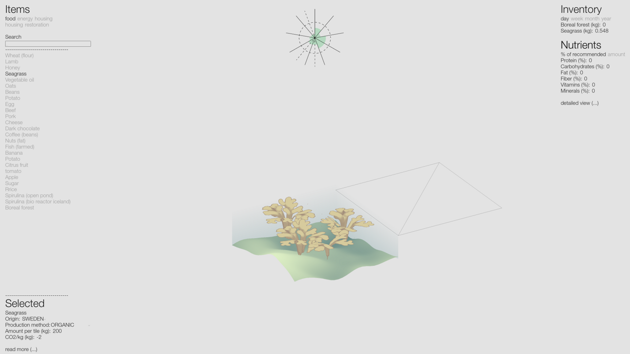
Result 2: Final prototype interface
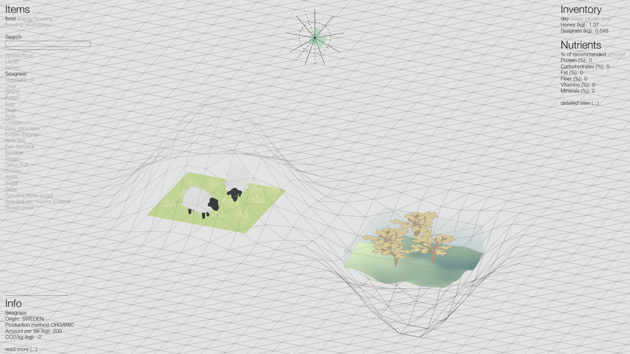
Result 3: Data visualization of a selected Planetary Boundary
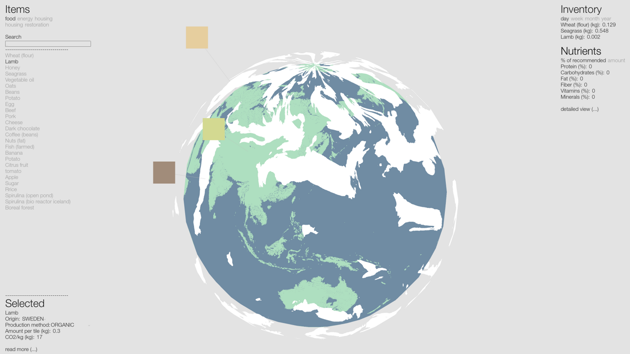
Result 4: Choices represented on in the "globe-view"









